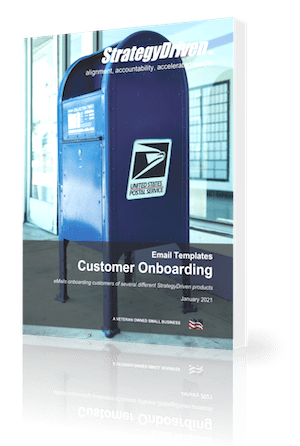5 Essential Measures Of Charting Business Success

The same principles could apply for business. A small company that couldn’t hope to compete with a multi-national entity may be adored within its community and have generations of patrons select them first, ultimately guaranteeing a small market to serve for some time, and won via fantastic goodwill efforts.
That said, while thinking of your success in relative terms is a smart place to start, it’s also important to know what format by which to present real, tangible metrics you can use to plan for the future. Let’s consider how to achieve that, below:
The Essential Key Performance Indicators (KPIs)
It’s important to recognize that the key metrics for growth can be defined in more than one way. This list of customer success KPIs is a fantastic place to start. They allow you to understand where your risks and opportunities are when it comes to net revenue retention and driving business growth. One recommendation provided will show you how to calculate net revenue retention (NRR) to see the growth of revenue even without onboarding new customers.
In addition, seeing the churn rate of customers who may come and go can help you determine what your actual growth figures are and how they trend. In addition to this, managing your relationships, especially with long-term customers, is an essential measure to focus on, as anyone can generate new clients, but if they stick around, that suggests you’re doing something correctly.
Sales Growth & Retaining Customers After Promotions
Retaining customers after a promotion is a healthy means of showing if your product or service is delivering its value, or is perceived as valuable, once the real charges are applied. Anyone can sign up to a month free trial, but if a customer is happy to retain your service after signing on during that period, then odds are you’ve kept them for the time being.
It can be helpful to also push surveys out to these accounts for an incentive, perhaps offering 5% discount on their next purchase for completing a five-minute survey. Here you can determine why they stayed, if they would in the future, and what their main decision was to keep their subscription ticking over. You may reformat this depending on the general intent of your business, but it’s not hard to see how this perspective makes a difference.
Customer/Client Favorability
It’s healthy to consider the customer and client favorability that you grow over time. Note that this means more than just enhancing your relationship and remaining on good terms, but analyzing just how long term clients or even recently onboarded clients regard your service.
Comment cards, feedback, and analyzing their behavior using your services (are they receptive to upselling, do they preorder your newest items, what packages do they go for?) can make a huge difference.
In addition, you may be able to track this feedback through online customer reviews, seeing the discourse regarding your company on social media platforms like Twitter, and seeing what aggregate websites like TrustPilot have to say about your particular brand. This might not be a particular numerical measurement, but it does give you an insight into the wider cultural conversation about your brand, and how it’s viewed from various levels of your customer base.
Market Share
Analyzing your share of the market by calculating your total sales and dividing them by the reported sales of your industry can be a good idea. It will help you understand what share of the market your business is cornering, or at least give you an approximate idea.
Of course, you can adjust this depending on your niche, your specific location and the markets you serve. Note that you probably will occupy only a small corner of the market, and that’s okay, even this can serve businesses competently for years upon years going forward.
Market share can give you a somewhat decent understanding of how you might be fairing compared to your competitors. In some ways, this may be obvious, but again, one more tool in the arsenal to determine your position is never a bad thing, and should never be considered as such.
Staff Feedback & Satisfaction
It’s healthy to consider the staff feedback and satisfaction that you gain over time. Sure, no business will run solely that its staff feel happy and comfortable in their roles, as this is not enough to support their salaries.
That said, it’s an essential measure of if your internal management structure has been working effectively or not, and if that’s backed up with meeting realistic targets and solid productivity metrics, then odds are you’re doing something right.
A staff survey, listening diligently to the reports of your managers, and making sure staff are permitted to review working for you online in any way they wish will make a big difference. Sure, staff being happy and feeling capable in their roles is a good thing no matter what. But it will also lead to benefits such as them going the extra mile, staying at your company and lowering staff turnover (which is good if you’ve invested money in training them), and even promoting working for your brand to people they know.
In some cases, companies that are awarded ‘best employer’ status in your area have candidates lining outside of the gate for a chance to work for you. A great number of promising staff members hoping to apply the best years of their innovative thinking and hard work is never a bad thing for your brand.
With this advice, we hope you can understand some of the most essential measures of charting business success. With a little luck and a willingness to keep on top of these metrics, you may feel more secure in your position than ever.













Leave a Reply
Want to join the discussion?Feel free to contribute!